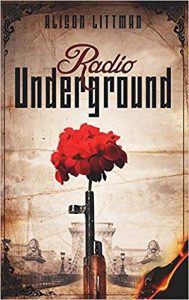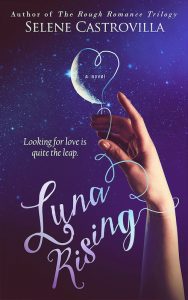Going It Alone Together: The Authors’ Collective
In my 2018 round-up I wrote about some changes that led to my self-published e-book travel guide to Portugal being put on hold for a while. For months, two friends had tried to convince me that I had alternatives to going it alone, ones that would allow my books to get into bookstores, schools, and libraries through a respected distributor of small press books. They had read my #kidlitwomen blog post, “Going It Alone as an Autistic Woman Writer,” but felt that I hadn’t given enough attention to new publishing models that had developed to challenge the publishing industry’s lack of inclusion of marginalized book creators. In fact, I had talked about the emergence of hybrid publishers but raised questions regarding the expense and whether these admittedly attractive and well-edited books would receive respectful review coverage from the trade journals or be dismissed out of hand as “vanity” because the authors paid (or crowdfunded for) a for-profit company to edit and produce the books.

We can complain about the publishing industry. Or we can join together to do something about it.
The alternative that my friends described to me is, as my [former] agent pointed out when I told her, not a new model but one that has “been around as long as the printed word.” It is the authors’ collective, in which a group of authors with similar interests, styles, and publishing aims band together, pooling know-how, skills, and, sometimes, financial resources to publish each other’s work. Sometimes called co-op publishing, the authors’ collective occupies a middle ground between traditional and self-publishing. Like traditional publishers, the authors’ collective selects titles to be published — usually all the members of the collective have to approve the book, much like an editorial committee at a traditional house — and demands a high level of editing and production. Sometimes, collectives edit and design in-house, but most often it’s a combination of in-house “sweat equity” and contracting with outsiders in the same way that traditional houses hire freelancers for copyediting and, often, cover design and interior formatting as well. Many authors’ collectives have arrangements with distributors of small-press titles, and in most (ideally, all) cases, collective members help promote and support each other’s books as a kind of in-house marketing department.
Authors’ collectives have been called “going it alone together,” though, because of what they share with self-publishers. They often consist of people who’d planned to self-publish their book until they joined with like-minded writers or were invited into an existing collective because both their writing and their other skills (editing, design, marketing, accounting, etc.) made a good match. However, in most collectives, each writer is responsible for funding the publication of their own book, including costs of printing, outside editors and designers, and marketing. In return, the writer receives the full amount for each book sold, minus the discount for the bookseller (indie, chain, or online) and the distributor, if there is one. For example, a member of an authors’ collective selling exclusively on Amazon would receive the standard 30-70% (depending on individual terms) of list price. In the collective I’ve been invited to join, the author nets 35%, exchanging a lower royalty for wider distribution and, because of wider distribution, a better chance of receiving a newspaper, trade journal, or blog review.
 I decided to go with the small press/authors’ collective Last Syllable Books for my new edition of Rogue after much thought and consideration. While I have long respected the YA fiction and marketing initiative of its founder, Selene Castrovilla, what tipped the scales for me was the quality of the press’s first novel from the second collective member, Alison Littman, which I reviewed on this blog in November. Ali’s debut novel, Radio Underground, has much in common with my own voices historical novel in progress, from the Cold War Eastern European setting and the protagonists’ burning desire for freedom to the multi-layered narrative from three points of view. Like my decision to publish with Curbstone Press because of my longtime admiration for their work to my going with an offer from Running Press Kids for Surviving Santiago because of Maria E. Andreu’s excellent and timely YA novel The Secret Side of Empty, published the previous year, I’ve chosen small presses out of respect for their mission and their work. After all, as I once told the late founder and editorial director of Curbstone, Sandy Taylor, “I want to work with someone where I respect 90% of the books they publish rather than 10% of the books they publish.” (Fortunately, he didn’t object to the implication that 10% of the books he published were not for me.)
I decided to go with the small press/authors’ collective Last Syllable Books for my new edition of Rogue after much thought and consideration. While I have long respected the YA fiction and marketing initiative of its founder, Selene Castrovilla, what tipped the scales for me was the quality of the press’s first novel from the second collective member, Alison Littman, which I reviewed on this blog in November. Ali’s debut novel, Radio Underground, has much in common with my own voices historical novel in progress, from the Cold War Eastern European setting and the protagonists’ burning desire for freedom to the multi-layered narrative from three points of view. Like my decision to publish with Curbstone Press because of my longtime admiration for their work to my going with an offer from Running Press Kids for Surviving Santiago because of Maria E. Andreu’s excellent and timely YA novel The Secret Side of Empty, published the previous year, I’ve chosen small presses out of respect for their mission and their work. After all, as I once told the late founder and editorial director of Curbstone, Sandy Taylor, “I want to work with someone where I respect 90% of the books they publish rather than 10% of the books they publish.” (Fortunately, he didn’t object to the implication that 10% of the books he published were not for me.)
 When I published with Curbstone, I visited a publisher located not in a gleaming urban office building but in a ramshackle house in an impoverished Eastern Connecticut town — a town that years later would serve as the model for Rogue‘s setting. At first it gave me pause — I asked myself what I was getting into — but I soon came to feel that Curbstone was my family, my people. I have this same good feeling about Last Syllable Books, and I know that Rogue is in good hands with Selene, Ali, and my talented cover designer Lisa Amowitz. Cover reveal coming soon!
When I published with Curbstone, I visited a publisher located not in a gleaming urban office building but in a ramshackle house in an impoverished Eastern Connecticut town — a town that years later would serve as the model for Rogue‘s setting. At first it gave me pause — I asked myself what I was getting into — but I soon came to feel that Curbstone was my family, my people. I have this same good feeling about Last Syllable Books, and I know that Rogue is in good hands with Selene, Ali, and my talented cover designer Lisa Amowitz. Cover reveal coming soon!
I also know that I’m in good literary company in joining an authors’ collective. When I was in high school, I learned about the Bloomsbury Group from a classmate who was obsessed with them. Perhaps the most famous authors’ collective of all time, they published each other’s works through Hogarth Press, as well as biographies of their fellow collective members. Some of the members — notably Virginia Woolf, E.M. Forster, and Lytton Strachey — have become part of the literary canon, and the press published venerable friends of the Bloomsbury Group such as T.S. Eliot and Vita Sackville-West. Returning to this publishing model feels like coming full circle for me. I hope that in future years this and other authors’ collectives gain notice and respect from critics, reviewers, and bloggers, and they open their minds to alternatives that innovative, groundbreaking writers have created to a relentlessly profit-driven system.







I try to read your blog whenever I get notification of a post. Imagine my delight to peek my name in this one! You honor me. Excited to see what you and Selene cook up together!
We’ll certainly keep you posted! Congratulations on the new agent! I look forward to hearing more about your new projects.
I didn’t know anything about authors’ collective groups until I read your post, Lyn. I also didn’t know that Bloomsbury was an authors’ collective group (at least formerly)! Wow!
I wouldn’t have known had it not been for the high school classmate who was obsessed with them. And the press was initially Hogarth Press, but after the members of the Bloomsbury Group passed on, it was renamed Bloomsbury and acquired by a larger publisher.